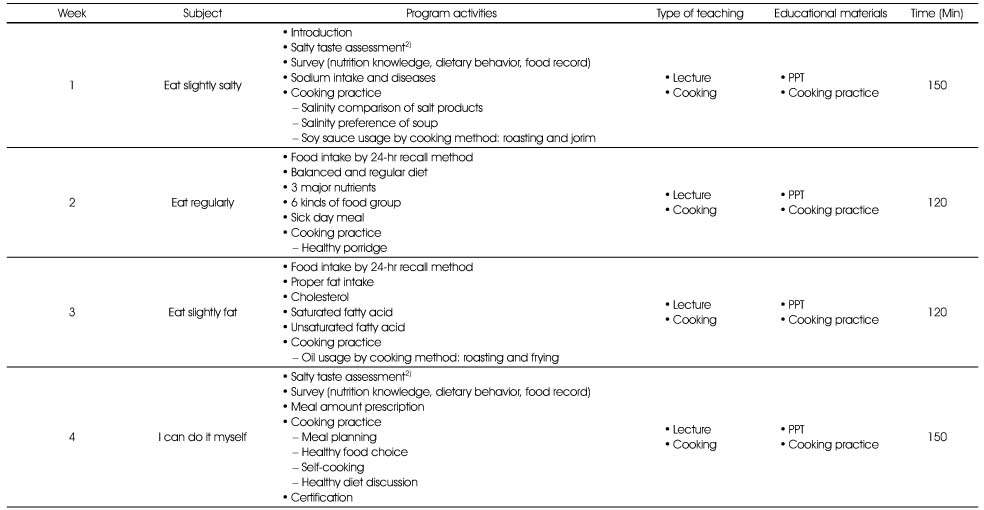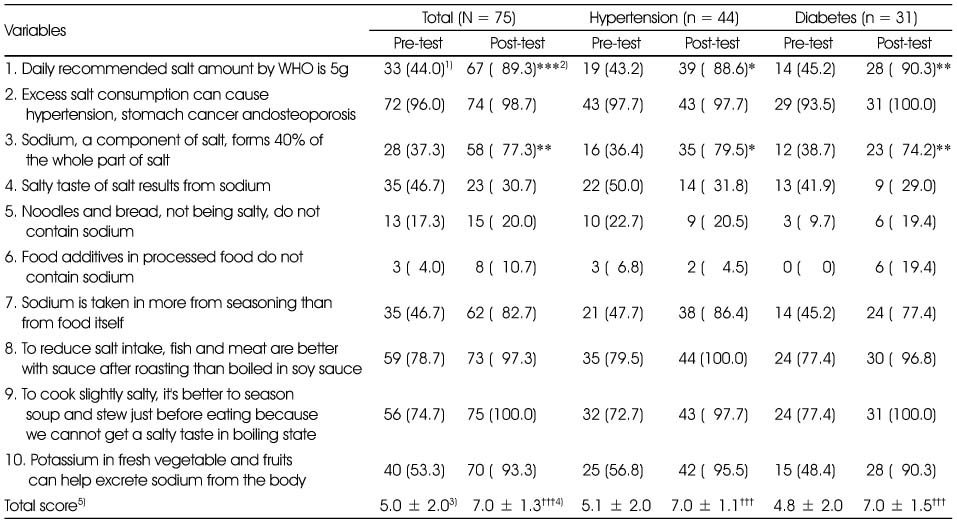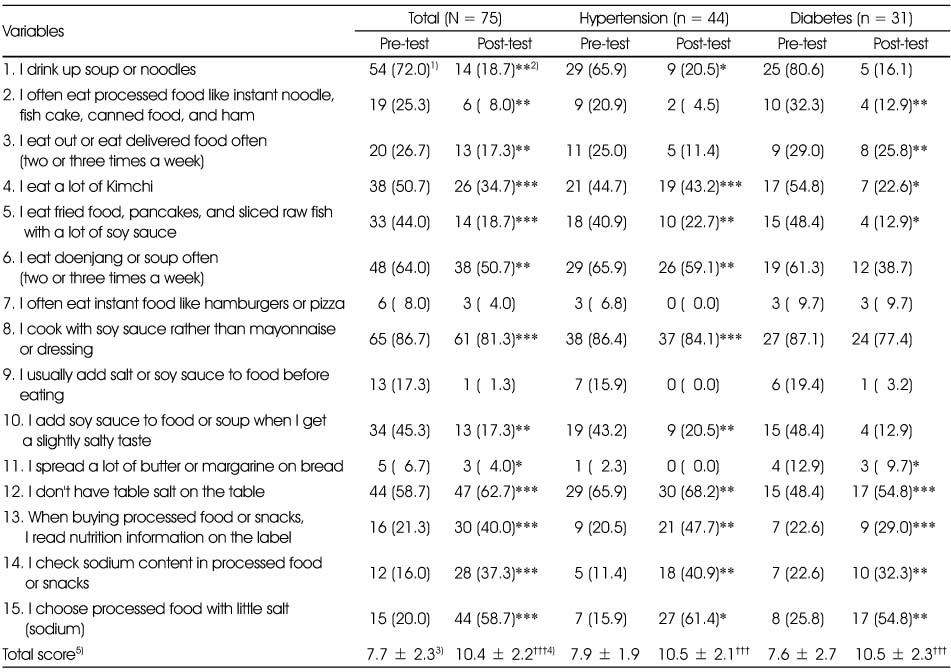References
1. Daegu Metropolitan City. HyDDI(Hypertension Diabetes Daegu Initiative) Project Reports 2007. Daegu Medical Association; 1–36.
2. Daegu Metropolitan City. KHyDDI(Korea Hypertension Diabetes Daegu Initiative) Project Reports 2010. 15–17.
3. Jung YY, Shin EK, Lee HJ, Lee NH, Chun BY, Ann MY, Lee YK. Development and evaluation of a nutrition education program on sodium reduction in elementary school students. Korean J Community Nutr 2009. 14(6)746–755.
4. Kang HJ, Shin EM, Kim KW. Evaluation of nutrition education for diabetes mellitus management of older adults. Korean J Community Nutr 2009. 14(6)734–745.
5. Kim HH, Shin EK, Lee HJ, Lee NH, Chun BY, Ahn MY, Lee YK. Evaluation of the effectiveness of a salt reduction program for employees. Korean J Nutr 2009. 42(4)350–357.
6. Korea National Statistical Office. Deaths and causes of death in 2009 2010.
7. Lee EH. The development and effects of therapeutic lifestyle change (TLC) program for the elderly with metabolic syndrome 2010a. Ewha Womans University; Ph.D thesis.
8. Lee HJ. Development and evaluation of community education program for cardiocerebrovascular high-risk patients 2010b. Kyungpook National University; Ph.D thesis.
9. Lee HJ, Kam S. Educational needs of elderly hypertensive or diabetes patients and educators for education program development of cardiocerebrovascular high-risk group. J Agric Med Community Health 2010. 35(2)177–192.
10. Lee JS, Lee WC, Lee KS, Koh KW, Choi EJ, Park CM. The new health promotion strategy in Japan-focusing on life-stylerelated diseases. J Korean Soc Health Educ Promot 2008. 25(3)167–181.
11. Lee KS, Kam S, Kim KY. Development of a comprehensive preventive maintenance measures cardiocerebrovascular disease, Youngnam University, Management Center for Health Promotion Project Reports 2011. 1–16.
12. Merrill MD. First principles of instruction. Educ Tech Res Dev 2002. 50(3)43–59.
13. Ministry of Health Welfare. Report on 2008 National Health and Nutrition Survey 2009. 50–53.
14. Moon EH, Kim KW. Evaluation of nutrition education for hypertension patients aged 50 years and over. Korean J Community Nutr 2011. 16(1)62–74.
15. Oh JY, Kim SB. Development and effects' analysis of nutrition education program for diabetes mellitus at community health center-focused on individual daily energy requirementsand food exchange units. Korean J Community Nutr 2010. 15(4)485–497.
16. Park HD, Kim EJ, Hwang MO, Paek YM, Choi TI, Park YK. Effects of workplace nutrition education program tailored for the individual chronic disease risks. Korean J Nutr 2010. 43(3)246–259.
17. Park YS, Son SM, Lim WJ, Kim SB, Chung YS. Comparison of dietary behaviors related to sodium intake by gender and gae. Korean J Community Nutr 2008. 13(1)1–12.
18. Seo KH, Lee HJ, Lim BD, Choi YJ, Oh HM, Yoon JS. Association of nutritional status with obesity by body mass index and waist circumference among hypertensive elderly patients. Korean J Community Nutr 2009. 14(6)831–845.
19. Seoul Metropolitan City. Cardiocerebrovascular Prevention and Management Promotion Project Reports 2010. 88–121.
20. Shin EK, Lee HJ, Ahn MY, Lee YK. Study on the development and evaluation of validity of salty taste assessment tool. Korean J Nutr 2008. 41(2)184–191.
21. Son MA, Lee JH, Kim EH, Choi YJ, Kim JS, Lee HJ, Lim BD. Effects of continuous nutritional education practice program on blood pressure, blood glucose, dietary behaviors of hypertension and diabetes patients at the education information center. 2009 Korean Dietitian Conference 2009. 335.
22. Warsi Q, Wang PS, LaValley MP, Avorn J, Solomon DH. Self-management education programs in chronic disease : a systematic review and methodological critique of the literature. Arch Intern Med 2004. 164(15)1641–1649.
23. Yim KS. The effects of a nutrition education program for hypertensive female elderly at the public health center. Korean J Community Nutr 2008. 13(5)640–652.







